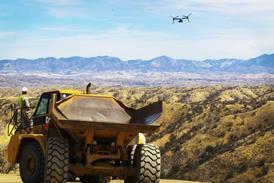GUY NORRIS / DAYTON
Flights will start later this year after windtunnel tests deliver "promising results" for four-to-six-seat aircraft
Honda R&D Americas has revealed the first major details of its secretive light business jet project, the HondaJet, and says flight tests are due to begin at Greensboro, North Carolina, later this year.
Design, fabrication and major structural tests have been completed, and functional system tests are now under way. Honda says windtunnel tests of the four-to-six passenger twinjet have produced "promising results". The HondaJet is distinguishable by its unconventional over-wing engine configuration similar to the VFW 614, as well as by its natural-laminar flow wing and nose design.
The aircraft, which has an all-composite fuselage, is also powered by Honda's HF-118 turbofan, rated at 1,670lb thrust (7.4kN) for take-off. Little is known about the new turbofan other than it is of twin-spool configuration, has a full authority digital engine control, and has been flight tested on a Greensboro-based Cessna Citation.
The aircraft is 12.5m (41.1ft) long, has a span of 12.2m and is 4.02m high to the top of its T-tail. Design maximum take-off weight is around 4,176kg (9,200lb) and maximum instrument flight rules range is expected to be about 2,035km (1,100nm). Due to the wing-mounted engines the cabin is larger than comparable light business jets with an overall length of 4.6m. Unlike the slower flying VFW 614, which was designed with perpendicular engine pylons, the HondaJet engine struts are swept back to enable it to fly at up to 420kt (775km/h) at 30,000ft (9,150m).
Windtunnel tests show the wing stalls first at around 55% semi-span, giving adequate stall margin over the outboard wing where the ailerons and large winglets are located. Honda says the over-wing engine mount configuration exhibits good stall characteristics and is not therefore a "disadvantage". The characteristics of the natural laminar flow design have also been tested on a Lockheed T-33 with a gloved wing section.
The composite fuselage nose section was designed with a natural laminar flow shape, which maintains a favourable pressure gradient while minimising cross-flow instabilities. Windtunnel tests were performed at Honda's low-speed site, as well as the University of Washington, the Boeing Transonic Wind Tunnel and the Japanese National Aeronautical Laboratory Transonic Flutter Wind Tunnel.
A Garmin International modular avionics suite presents all aircraft and engine data, real-time weather information and terrain data on dual, large format primary flight displays and a multifunction flight display.
Source: Flight International























